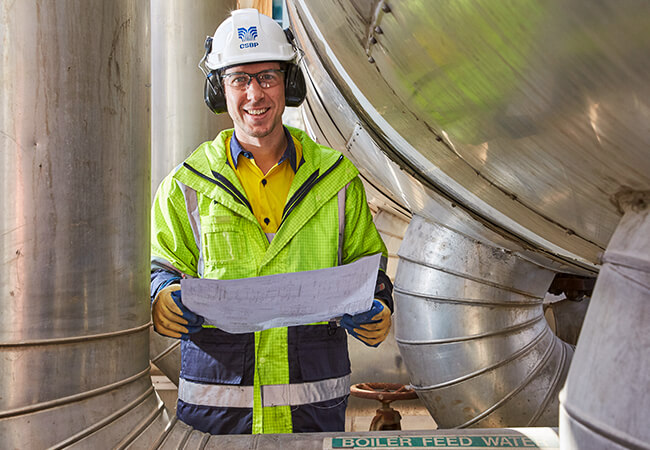CSBP has been utilising a traditional yet modern ‘unsung technology hero’ in its bid to reduce its greenhouse gas emissions.
Capturing waste heat from its chemical processes to generate electricity has been part of CSBP’s everyday efforts since CSBP’s Kwinana site was first established in 1968.
Waste heat recovery systems are an integral part of the design of several of the industrial giant’s chemical plants in Kwinana, generating more than 75 per cent of the 138-hectare site’s electricity requirements. In fact, CSBP is one of the few industrial sites along the busy Kwinana Industrial Strip that generates most of its electricity.
CSBP’s waste heat recovery systems capture heat, which is a by-product from their nitric acid, sodium cyanide and ammonia plants, and utilises it to heat water, creating steam that drives a turbine to generate electricity. If the heat was not utilised, it would dissipate into the atmosphere.
It’s an effective way for the business to limit its greenhouse gas emissions, generate clean power, increase efficiency and save energy – allowing CSBP to benefit from a more circular economy and contribute to its sustainability goals.
Although the technology has been around for decades, it has been fine-tuned over the years, and efficiencies are now even better for businesses like CSBP, which prides itself on being an early adopter of technology advancements.
Electricity generated from the heat recovery systems enables CSBP to supply most of its Kwinana site’s power needs, including its Fertiliser and Ammonium Nitrate prill plants.
CSBP General Manager Ammonia/ Ammonium Nitrate Ryan Hair said the business has been utilising recovery waste systems as an integral part of their chemical production processes for more than 40 years, and its environmental benefits are accepted by most of the team as just part of what they do.
“We are proud of the fact that our reliance on the state power grid is very small. In the past, we have been substantially self-sufficient.
“The best generation year was 2020 when we generated 290GWh – that’s enough electricity to power 41,600 homes,” said Ryan.
With further growth opportunities being explored, CSBP continues to look at alternate energy generation options to meet their own power needs.

